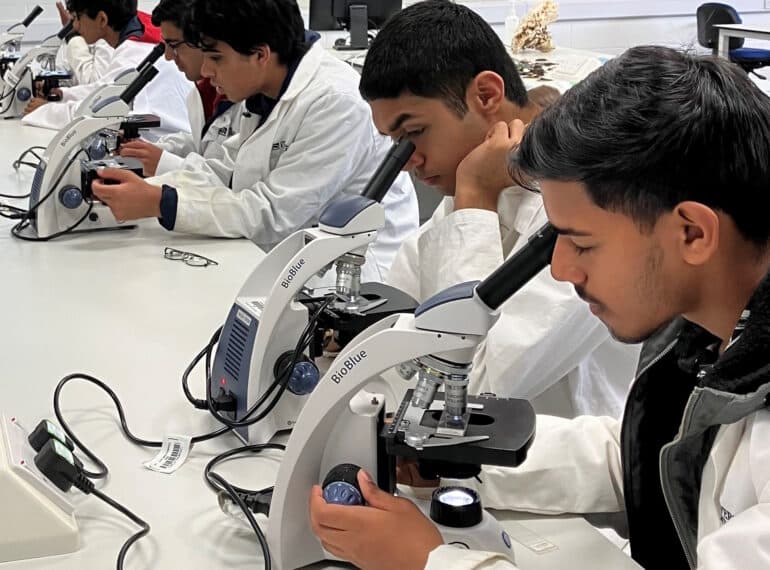
When Deputy Head Anne Macdonald was watching the BBC’s Our Changing Planet, she was so impressed with the work of the Coral Spawning Laboratory shown in the Restoring Our Reefs episode that she wrote asking for a visit.
 The result was a summer trip by 25 senior pupils, who learned about the ground-breaking research at the University of Derby laboratory that aims to save the world’s coral reefs from extinction.
The result was a summer trip by 25 senior pupils, who learned about the ground-breaking research at the University of Derby laboratory that aims to save the world’s coral reefs from extinction.
The day-long visit featured two workshops, before ending with the boys playing what Mrs Macdonald described as “perhaps the most complicated board game in history”, through which they learned about how to build a healthy, resilient reef.
“Coral reefs occupy less than 1% of the marine environment, but are home to 25% of all marine life. They are crucial to marine biodiversity,” said Mrs Macdonald. “They also support a way of life and the livelihoods of millions of people around the world, especially in low-income countries (and so have socio-cultural, economic, and environmental significance).
 “The scientists at the Coral Spawning Laboratory are engaged in ground-breaking research with the aim of saving reefs from extinction, specifically in relation to the threats of ocean acidification and warming caused by human-induced changes to the carbon cycle and global warming.
“The scientists at the Coral Spawning Laboratory are engaged in ground-breaking research with the aim of saving reefs from extinction, specifically in relation to the threats of ocean acidification and warming caused by human-induced changes to the carbon cycle and global warming.
“The aims of this trip included: discovering more about these fascinating ecosystems; seeing first-hand how scientific research is undertaken in a laboratory setting and the positive impacts that uncertain, but ground-breaking, science can yield; supporting boys’ studies for their Biology and Geography A-levels; and providing an opportunity to explore the world of conservation biology, molecular ecology, and marine biology, for those considering taking a degree relevant to these fields. Experiences such as these are invaluable to those aspiring to study science at university.”
 The 25 participating students were drawn mainly from the current Year 13, but also from Years 11 and 12. They were accompanied by Mrs Macdonald, a Geography teacher in addition to her role as Deputy Head (Academic), and by Gillian Ridge, who is Head of Biology.
The 25 participating students were drawn mainly from the current Year 13, but also from Years 11 and 12. They were accompanied by Mrs Macdonald, a Geography teacher in addition to her role as Deputy Head (Academic), and by Gillian Ridge, who is Head of Biology.
Their visit was hosted by Professor Michael Sweet, professor in molecular ecology and co-founder of the Coral Spawning Laboratory, which is at the Environmental Sustainability Research Centre, part of the university’s College of Science and Engineering.
Scientists fear for the survival of coral reefs; their extinction is considered a real and imminent threat. The work of scientists at the Coral Spawning Laboratory and at universities globally is helping to buy time in the hope that the reefs can be kept in existence while climate mitigation progresses.
As the laboratory’s name suggests, the scientists there are pioneering techniques to maximise coral spawning (including ‘Coral IVF’) and undertaking research to discover the ideal environmental conditions for successful coral fertilisation and growth.
 The boys enjoyed a tour of the laboratory, during which they had the opportunity to see the coral-spawning tanks and the new seagrass facility, where scientists recently succeeded in getting seagrass to flower and seed in laboratory conditions.
The boys enjoyed a tour of the laboratory, during which they had the opportunity to see the coral-spawning tanks and the new seagrass facility, where scientists recently succeeded in getting seagrass to flower and seed in laboratory conditions.
One workshop focussed on coral biology and threats to corals, specifically coral-bleaching caused by rising ocean temperatures. It included the chance to look at coral through a microscope, identifying the cellular differences between healthy and bleached coral.
The second workshop looked at climate change – at how scientists working collaboratively and with commercial partners can help accelerate the pace of climate-change mitigation and adaptation.
“The boys who attended were very appreciative of this opportunity, with one, for example, expressing interest in the commercial aspects of the team’s work and another enjoying hearing about scientists from different universities working together,” Mrs Macdonald concluded.
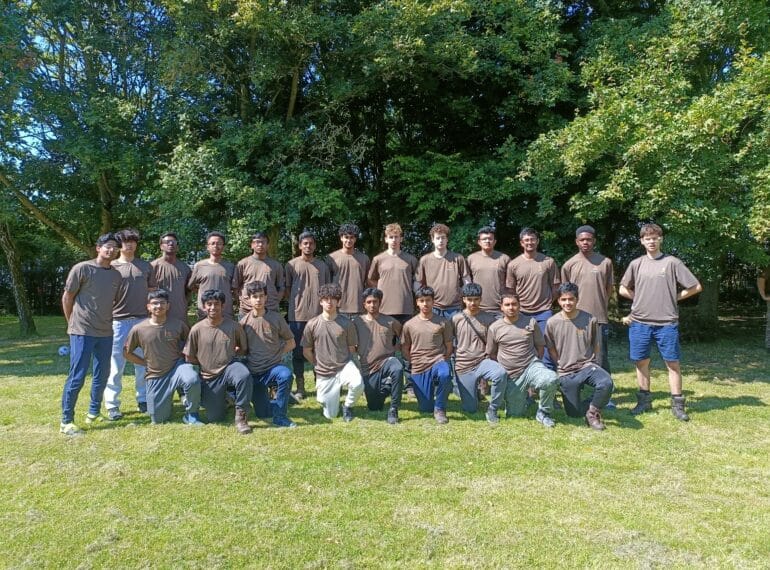
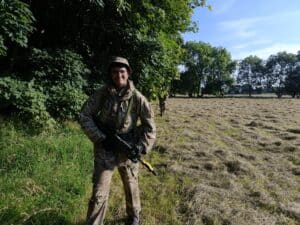 There were challenges from the weather, too: during two nights and three days out on the terrain, they had to deal first with the cold and camping on wet ground, and then with very hot temperatures towards the end. The other two nights were spent in the site’s military accommodation.
There were challenges from the weather, too: during two nights and three days out on the terrain, they had to deal first with the cold and camping on wet ground, and then with very hot temperatures towards the end. The other two nights were spent in the site’s military accommodation.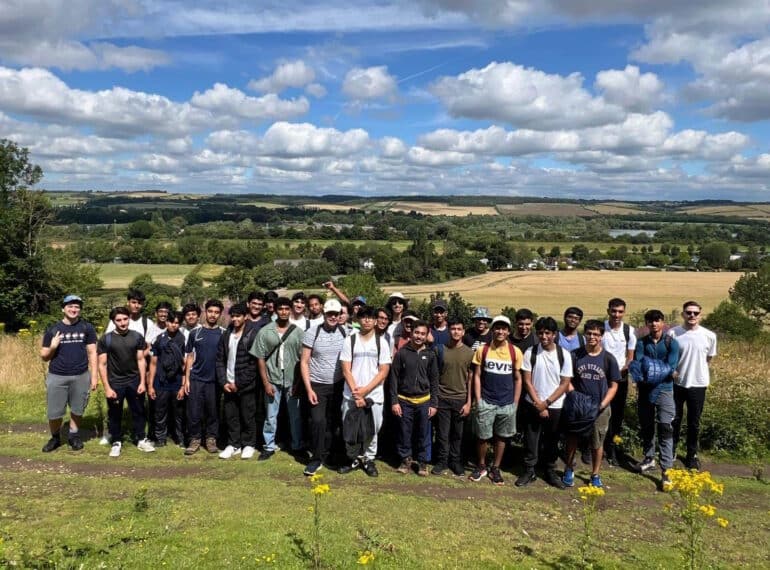
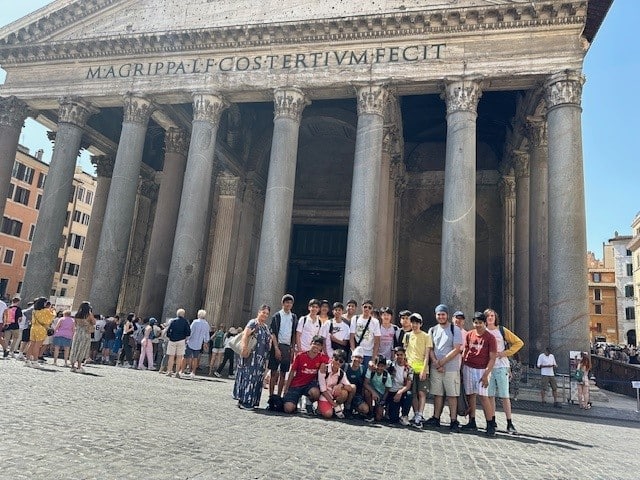
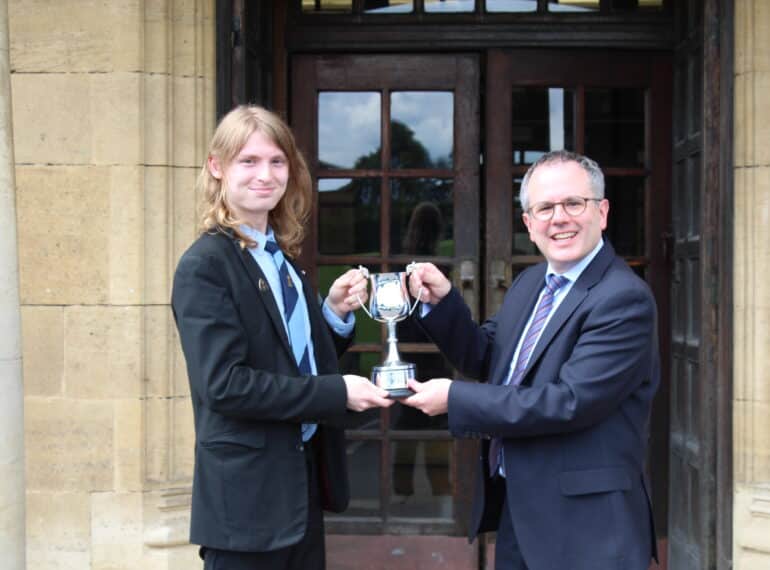
 “My congratulations go to House Captain Robin Bickers, Deputy House Captain Zeyuan Wu, and to all the members of Broughton House,” he said. “As the points totals attest, this was a closely fought contest. Points are amassed from many different areas of School life, and Broughton’s achievement thus demonstrates considerable commitment, as well as consistency across a broad range of endeavour.”
“My congratulations go to House Captain Robin Bickers, Deputy House Captain Zeyuan Wu, and to all the members of Broughton House,” he said. “As the points totals attest, this was a closely fought contest. Points are amassed from many different areas of School life, and Broughton’s achievement thus demonstrates considerable commitment, as well as consistency across a broad range of endeavour.” He told the boys that QE Flourish this year included no fewer than 200 trips, 33 of them residential. Every single member of QE’s teaching staff took part in at least one School trip. Six hundred and fifty boys had seen a live show. In total, the programme had delivered 13,508 experiences to individual pupils, Mr Bonham-Carter said.
He told the boys that QE Flourish this year included no fewer than 200 trips, 33 of them residential. Every single member of QE’s teaching staff took part in at least one School trip. Six hundred and fifty boys had seen a live show. In total, the programme had delivered 13,508 experiences to individual pupils, Mr Bonham-Carter said. The assembly also celebrated a busy year for the School’s musicians, who have been involved in eight concerts, QE’s May the fourth be almost with you Music festival, trips, charity performances, and this month’s tour to Vienna, as well as providing musical support for several formal School occasions.
The assembly also celebrated a busy year for the School’s musicians, who have been involved in eight concerts, QE’s May the fourth be almost with you Music festival, trips, charity performances, and this month’s tour to Vienna, as well as providing musical support for several formal School occasions.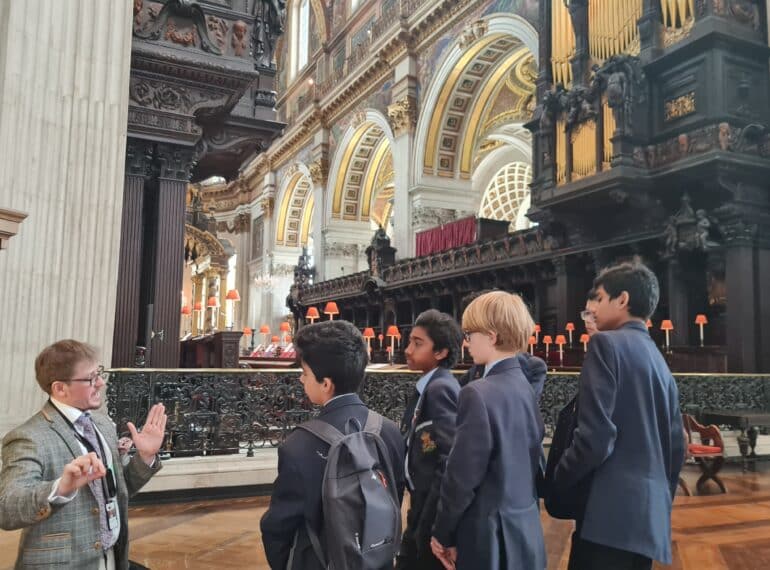
 More recently, QE pupils enjoyed a special day at St Paul’s Cathedral, where they were able to play the organs, receive a masterclass from the cathedral’s Organ Education Lead, Jeremiah Stephenson, and enjoy a privileged view of evensong. While St Paul’s sometimes hosts primary schools, QE’s was the first such visit by a secondary school.
More recently, QE pupils enjoyed a special day at St Paul’s Cathedral, where they were able to play the organs, receive a masterclass from the cathedral’s Organ Education Lead, Jeremiah Stephenson, and enjoy a privileged view of evensong. While St Paul’s sometimes hosts primary schools, QE’s was the first such visit by a secondary school.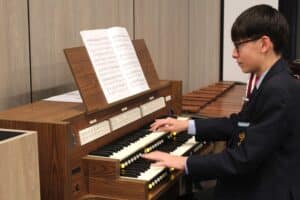 “I think it’s made a big difference, and certainly when it arrived, there was this real buzz – ‘Ooh, what is this amazing machine that’s suddenly appeared?’ – and we had quite a few pupils coming to ask to play.”
“I think it’s made a big difference, and certainly when it arrived, there was this real buzz – ‘Ooh, what is this amazing machine that’s suddenly appeared?’ – and we had quite a few pupils coming to ask to play.” The day at St Paul’s Cathedral was led by Mr Stephenson, a prize-winning graduate of Cambridge and the Royal Academy of Music.
The day at St Paul’s Cathedral was led by Mr Stephenson, a prize-winning graduate of Cambridge and the Royal Academy of Music. Organ Scholar Joel added: “I really enjoyed discovering the variety of organs there, and especially getting access to see some of the inner workings of the Royal Trumpets, high above the West Doors. It was insightful learning about some of the sound physics from Mr Stephenson.”
Organ Scholar Joel added: “I really enjoyed discovering the variety of organs there, and especially getting access to see some of the inner workings of the Royal Trumpets, high above the West Doors. It was insightful learning about some of the sound physics from Mr Stephenson.”